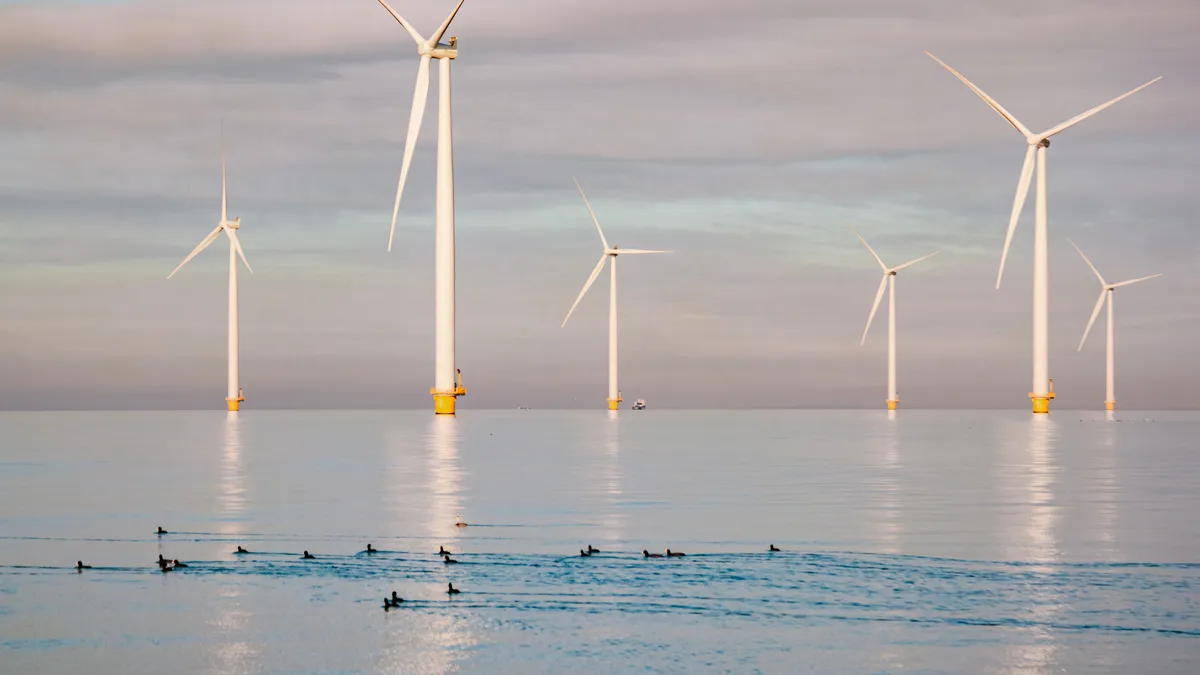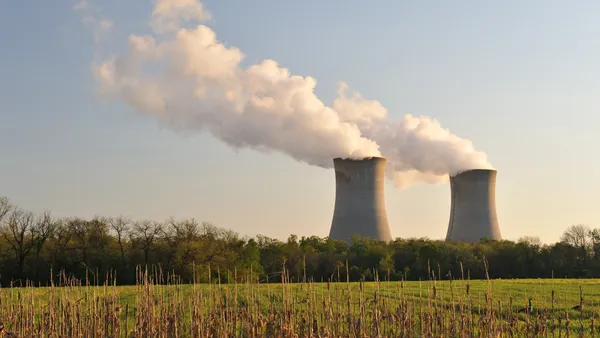The summer of 2016 has been a contentious one — somewhat unexpectedly — for utility-solar issues.
In Arizona, home to some of the most intense solar debates in recent years, the discussion was supposed to enter a more collaborative phase, with the start of negotiations over a net metering successor tariff between utilities and solar companies.
And in Nevada, a “New Energy Task Force” convened by the governor aimed to bridge divides between the camps open since before a controversial net metering decision at the end of last year.
But in Arizona, net metering talks broke down in less than a day, shifting attention to a heated docket over residential demand charges and rumors of political influence that continue to dog the commission.
And Nevada, Commissioner David Noble, author of the net metering decision, aired his grievances with the solar industry, pushing them to abandon a ballot proposal — later denied a spot on the November ballot — that would have restored retail rate net metering.
Similarly contentious debates continue in Maine as well, after legislators came two votes short of overriding a gubernatorial veto on a broadly-supported solar incentive bill.
With that level of drama, a handful of states tend to dominate utility-solar headlines, and regulatory decisions there help set the tone for the debate in other jurisdictions. But dozens of other states are handling utility-solar issues as well, some with more collaborative approaches than others.
Despite Colorado’s strong solar energy potential and a growing market, the state has so far avoided the most contentious aspects of utility-solar debates. Last week, Xcel Energy and 26 solar and consumer interest groups struck a far-reaching compromise on a rate case, a controversial large-scale utility solar program and the regular review of the state’s renewable energy plan.
“It was a monumental achievement to settle this many issues of this importance to the future of Colorado energy at once,” Colorado Solar Energy Industries Association (COSEIA) Executive Director Rebecca Cantwell told Utility Dive.
The final settlement, announced Aug. 15, included three key provisions.
First, it replaced Xcel’s initial request for a fixed “grid use charge.” Instead, there will be a voluntary time-of-use (TOU) rate trial for residential customers and a voluntary time differentiated rate (TDR) demand charge pilot program for residential and commercial customers.
Second, the settlement approves Xcel’s proposed 50 MW solar installation, allowing the utility will be allowed to market subscriptions for the output to its retail customers through a green rider program. That could put the utility into competition with Colorado’s budding private sector community solar developers, though Xcel agreed to conditions stakeholders said would help preserve a level playing field.
Finally, stakeholders approved regularly-scheduled updates of Colorado’s Renewable Energy Plan (RE Plan) for 2017 through 2019. They includes capacity increases for Xcel’s renewables programs and a commitment from the utility to treat all net metered solar owners equitably.
The settlement has national implications, noted national Sean Gallagher, director of state affairs for SEIA. In addition to a victory over fixed charges opposed by the solar sector in many states, the structure of Xcel’s green energy rider program could be an example to other states.
Erin Overturf, a senior staff attorney for Western Resource Advocates (WRA) who helped shape the settlement, was less sure of the impact of the green rider program in particular.
“The Renewables*Connect (R*C) program is one of the big things Xcel got in the agreement and but solar advocates still argue the regulated utility is trying to compete in the unregulated market,” she said. “It may in some ways compete with some solar developers’ products but it is also distinguishable in other ways. Only time will tell if customers see value in it.”
Settlement negotiations
Xcel filed the three original proposals for a rate case, green rider program and renewable energy plan in January and February, utility Vice President Alice Jackson said.
Xcel first moved to settlement talks when comments came in from the 26 intervenors across the three dockets, according to Jeffrey Ackermann, director of the Colorado Energy Office (CEO). The governor’s office and the utility had been talking since late 2015 about Xcel's Our Energy Future vision statement, Ackermann said, and the CEO had told the utility to find “mutual co-existence” with the state’s private-sector solar developers.
At Xcel’s invitation, a small group of pro-solar intervenors met to discuss early compromise proposals. Private discussions between solar groups, including COSEIA, national SEIA, the Energy Freedom Coalition of America, Sunrun, SunShare and the Clean Energy Collective (CEC), followed.
The solar groups also talked privately with Ackermann's Energy Office, OCC, WRA, the PUC Staff, and representatives of large Colorado commercial-industrial electricity consumers.
Stakeholders went back to Jackson and made it clear they wanted to talk about the full spectrum of issues, so concessions in one docket could be met with concessions in another.
At that point, commission proceedings were pending and any settlement had to be reached quickly, Cantwell said. “Xcel said the only way to quickly get to agreement across three dockets was to not have 26 parties at the table.”
On June 17, a smaller group and Xcel began a series of four-hour meetings several times a week.
“It was rough early on because there was a lot of distrust and rhetoric from parties who don’t always play well together and sometimes attribute bad intentions where there may not be bad intentions,” Overturf said.
“But I think they had seen that none of the Nevada stakeholders came out looking very good and they decided to find a path forward,” she added. “There wasn’t one moment when the clouds parted and the sun shined down. It was methodical detail work on very specific policy solutions.”
On July 19, the 26 groups were invited to an all-day meeting and the proposed agreement, as hammered out by the small group, was presented.
Those who had been excluded expressed some dissatisfaction and called for changes around the edges, but the basics were ratified, making the final agreement possible, Overturf said.
After issuing the settlement announcement, a number of solar stakeholders praised the way Xcel came to the negotiating table.
“Alice Jackson is a really strong leader,” Cantwell said. “She represented her interests and I represented mine and we butted heads a lot, but I have a lot of respect for how she handled this.”
“It takes a big vision and real buy-in,” Overturf echoed, “when you are in the trenches with three separate pending litigated cases, to see this possibility could be worth the heartache and the headache and Alice Jackson saw that.”
Jackson said she and Xcel were guided by the three principles outlined in Xcel’s Our Energy Future, she said. The first is to give customers energy choices. The second is to embrace technologies that benefit customers. The third is to do those things in ways that support Colorado economic development.
“That was behind all three of the filings and our negotiating was aimed at getting to those three long-term goals,” Jackson said.
The settlement agreement now enters a comment and review period at the PUC.
A new rate design
Xcel’s early rate design proposals included the fixed distribution system usage charge and a type of demand charge. The fixed grid usage charge was opposed not only by the solar advocates but by every party in the proceeding, Overturf said.
“The most important thing was the removal of the fixed charge,” said Cindy Schonhaut director of the Office of Consumer Counsel (OCC). “Fixed charges and demand charges are not good for consumers.”
Ackermann agreed. “We and others signaled early on that a new rate design is needed because the market is seeking better price signals,” he said.
The fixed charge was only for distribution system costs and was energy-based, Jackson said. It was an attempt to send an accurate price signal for distribution system usage.
"It was quickly clear the others were not ready for that so we began looking for a way to move toward a good price signal," she said. “We ended up with two programs that customers can participate in on a voluntary basis.”
Both the TOU and TDR programs will begin with 10,000 customers in 2017 and expand by 18,000 in 2019. Both are contingent on CPUC approval of Xcel’s proposed rollout of smart meters, beginning in late 2018. Until then, customers in both programs will utilize bridge meters capable of displaying the information necessary for voluntary participants to benefit from the rates by managing their usage.
The TOU trial rate’s energy-only charges will be higher during predefined peak periods and lower during “shoulder” and “off-peak periods,” Jackson said. Prices will “reflect how much it costs the utility to operate its system.”
Central to the pilot TDR plan are a charge based on the customer’s monthly peak usage and a charge based on the customer’s peak usage during Colorado’s 2 p.m. to 6 p.m. weekday peak demand period.
“This is an effort to indicate to customers there are higher costs to the utility at different times,” Jackson said. “This could be the long-term future as customers become more aware of their energy costs and as technology allows them to better manage it.”
The agreement carefully distinguishes between the labels “trial” for the TOU rate and “pilot” for the TDR plan. Both will be re-evaluated in 2019 but, pending CPUC approval, the TOU rates would become the default plan for all customers as smart meters become available.
The future of the demand charge plan, however, is contingent on the pilot outcomes.
"These are more sophisticated rates than we have used and we will see in 2019 how customers respond,” Jackson said.
The current rate design was set before air conditioning, TVs in every room, rooftop solar, and electric vehicles, Jackson said. “It is clearly time for price signals that allow us to manage our long term system costs and allow customers to know the impacts of their energy use.”
“Let's find out if consumers can take advantage of these voluntary charges,” Schonhaut said.
Though solar groups are more comfortable with TOU rates than residential demand charges, the settling groups approved of both the trial and the pilot
“We are not against testing the two kinds of advanced rates,” Cantwell said. “That is smart.”
Information about customer usage and behaviors that will be available from the smart meters will be crucial but the rollout “is an expensive proposition,” she added. “We need to get to a smarter utility system but we need to be cognizant of the impacts on ratepayers.”
A big victory, all solar groups agreed, was getting Xcel to move away from its fixed charge proposal. Several participants told Utility Dive Xcel shifted its focus in return for an agreement from the settling parties not to oppose a decoupling proposal it filed in a separate docket.
“The stipulation by the parties that they would not oppose the concept of decoupling was critical to the overall agreement,” Overturf said. Other stakeholders declined to comment on the record because the decoupling proceeding is ongoing.
The OCC was the only intervenor that did not sign on to the agreement to not oppose Xcel’s decoupling proposal.
“Their decoupling proposal has to be looked at closely because it applies only to residential and small business customers, so they would carry the weight of the remedy,” Schonhaut said.
Xcel has been interested in decoupling “for a long time as a kind of transition rate design,” Jackson said. “Decoupling can help the utility provide initiatives for distributed energy resources and energy efficiency opportunities.”
Renewables*Connect and community solar
Xcel’s Renewables*Connect (R*C) filing proposed a 50 MW solar project to be marketed as a retail product. The green energy program was rejected by the commission in 2014 and reconfigured by the utility.
The state’s community solar gardens developers consider it to be potentially unfair competition. Under Colorado rules, existing shared solar programs can be no larger than 2 MW and can only be marketed locally. The R*C 50 MW project would be marketed statewide.
“Xcel is by law allowed to offer community solar and we’re okay with the competition as long as it is a level playing field,” said Tom Hunt, vice president at the Clean Energy Collective, the leading U.S. community solar developer. “We want to be sure this very different product is not simply the utility exempting itself from restrictions that apply to other developers.”
The R*C program is different from smaller community solar programs because it is designed to meet the demands of large non-utility off-takers, not residential customers, Xcel Energy Colorado President David Eves told Utility Dive in April. The long term fixed price could initially be slightly more expensive than retail electricity, but the utility expects customers to get savings over a 10-year timeframe, as well as hedge value against fuel prices.
Ackermann confirmed that the primary objective of R*Cwas to bring Xcel into the large customer end of the market. Important changes were made to Xcel’s initial proposal to separate R*C from what other community solar developers do — namely, marketing to residential customers.
"The compromise is not perfect, but perfect can be the enemy of the good,” he added. “Some solar advocates argue any utility access to a potential solar customer means one less solar customer available to the market. But that is the nature of a compromise.”
Xcel will offer R*C to its retail customers, including larger customers looking for higher capacities of renewables-generated electricity, Jackson said. Through its community solar-like price structure, it completely avoids a cost shift.
“It is important to us that this is a renewables option for which the cost is covered only by customers who choose it and non-participating customers are not affected," she added.
With future commission approval, R*C could be expanded, Jackson said. With its existing WindSource and Solar*Rewards programs, Xcel's large electricity consumers in Colorado can now "move toward getting 100% of their power from a mix of renewable resources."
“It is not clear whether Xcel’s product will be priced so that customers get a discounted rate either immediately or over time,” Overturf said. “The viability of the product will depend on the bids developers make to build the project.”
The limits on the way Xcel can construct the price to its customers and the price at which it credits subscribers “will likely result in a price premium” and make competition possible for private developers, Hunt said.
“The agreement also limits Xcel to month-to-month, five year, and ten year contracts, whereas community solar developers can offer any kind of contract the customer wants that works,” he added.
A distinct improvement in the agreement allows developers to more cost-effectively meet the requirement to make 5% of capacity available to low income subscribers, by changing from a project basis to an overall program basis, Hunt said.
Other provisions in the agreement should also protect community solar developers, according to SEIA’s Gallagher. They require Xcel to provide a common online landing page for all of the utility’s voluntary renewable energy programs and circumscribes marketing efforts so customers can compare all available renewables options.
“We did not agree with every detail but this will allow for a viable market,” Hunt said.
Despite the limitations, R*C is likely to serve Xcel’s purposes as well, according to World Resources Institute (WRI) Director of Utility Innovation Letha Tawney.
It will be the first commission-approved "large-scale subscriber product designed by a utility to meet large corporate users’ demand for renewables-generated electricity,” she said.
Because it meets several of the Buyers’ Principles announced through WRI by major corporate energy customers, it could lay the groundwork for future programs designed to allow utilities to meet large customer demand, she added. “With a new product like this, the first one always teaches us ways to improve the next one.”
The ‘next iteration of a utility’
There was general agreement about the increased renewable energy capacities added to Xcel’s 2017 through 2019 RE Plan.
“We wanted more capacity over the next three years and they wanted less and we met in the middle,” Hunt said.
"Colorado’s community solar gardens program now has 18 MW online, and this settlement adds another 105 MW," Jackson said. "That is a pretty fast expansion.”
CEC was hoping for as much as 200 MW of new capacity but “from the perspective of managing the system, the utility seemed to think the lower number was a better choice,” Hunt said.
Disagreements like that led to “what may be the most important thing that came out of this deal,” according to Cantwell.
Written into the final agreement is a commitment by Xcel and the parties to ongoing quarterly stakeholder conversations.
“The stakeholder groups will be important for implementation,” Overturf agreed. “Some might say it is kicking the can down the road but there has been relationship-and-trust-building they can expand on to deal with technical, nitty gritty details still to be worked out.”
Those details include how customers with behind-the-meter storage will interconnect and be net metered, how existing voluntary programs can be improved, and how solar-utility interconnection work and information sharing can be improved, she said.
They will also work on implementation and evaluation of the new rate programs and follow up on Xcel’s commitment to do distribution system mapping and make the results available to solar builders, Overturf added.
What Xcel would like most from solar advocates, Jackson said, is “respect for and understanding of what the utility needs to stabilize its cost recovery on fixed assets so it can continue to keep the lights on."
It was necessary to work through some emotions to achieve this collaboration, Jackson said, but "through the settlement, we are finding what we each need to move forward and be successful.”
“This agreement is a path to the next iteration of the utility," Overturf said. "And it proves that reaching a solution that meets diverse stakeholders' interests does not have to be as polarizing as it has been in other states."
Correction: An earlier version of this article stated that the net metering ballot proposal in Nevada had been cleared for the November ballot, which is incorrect.






















